Removing limescale buildup from black taps is essential for maintaining their aesthetic appeal and functionality. Limescale deposits can accumulate over time, leaving unsightly stains and affecting water flow. In this comprehensive guide, we’ll explore effective methods for how to remove limescale on black taps.
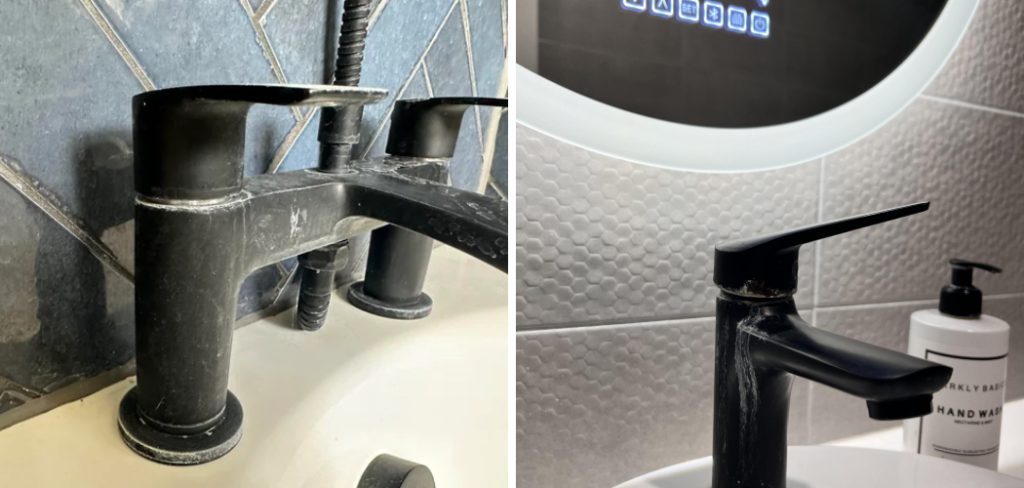
From using natural remedies like vinegar and baking soda to specialized cleaners designed for tap surfaces, we’ll cover a range of techniques suitable for various degrees of limescale buildup. Whether you’re dealing with minor stains or stubborn deposits, mastering the art of limescale removal will help restore the beauty and performance of your black taps, leaving them sparkling clean and free from mineral deposits.
Importance of Limescale Removal
Removing limescale from black taps is not just about preserving their sleek appearance; it plays a crucial role in maintaining the health of your home’s plumbing system. Limescale, a hard, chalky deposit that forms from calcium carbonate in hard water, can substantially decrease water flow, leading to inefficient tap operation.
Over time, severe limescale build-up can even cause permanent damage to tap mechanisms, potentially resulting in costly repairs or replacements. Furthermore, limescale can harbor bacteria, making its removal pivotal for ensuring the cleanliness and safety of water coming through the taps. By regularly eliminating limescale deposits, homeowners can safeguard the longevity of their taps, ensure optimal functionality, and maintain water quality.
Black Taps and Common Limescale Issues
Black taps, with their sleek and modern appearance, have become increasingly popular in contemporary kitchens and bathrooms. However, the distinctive dark finish of these taps can make limescale deposits particularly visible, highlighting white or grey chalky residues that clash with the tap’s aesthetic.
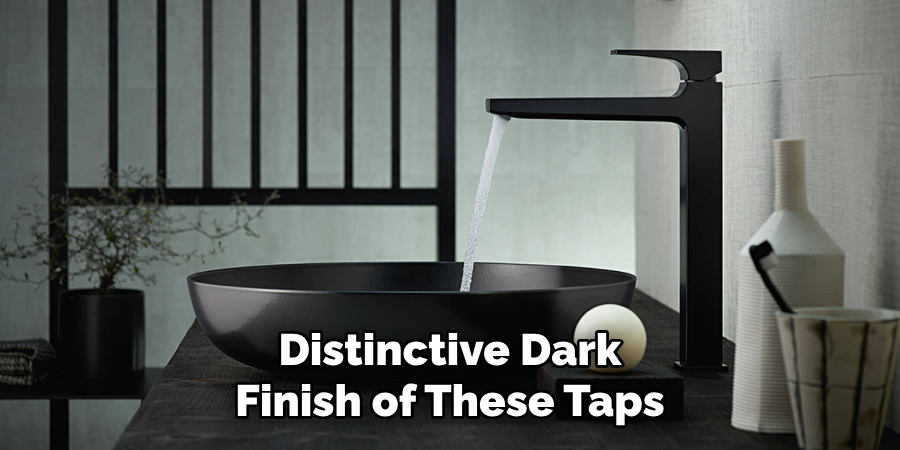
Common issues include a dulling of the tap’s finish, where limescale can make the surface look less vibrant and even slightly discolored if not addressed promptly. Additionally, in areas with hard water, limescale buildup can occur more rapidly, requiring more frequent cleaning to maintain the tap’s appearance.
Another concern is that abrasive cleaning methods or harsh chemicals can damage the sophisticated finish of black taps, making the removal of limescale without harming the tap’s surface a delicate task. Proper care and regular maintenance are essential to prevent these issues and keep black taps in pristine condition.
What is Limescale?
Limescale is a hard, off-white, chalky deposit found primarily in places where “hard water” is prevalent. It forms when water that is high in minerals like calcium and magnesium bicarbonate evaporates, leaving behind the solid minerals. This process occurs frequently in household appliances such as kettles, boilers, and taps, especially in areas with water that has high mineral content.
In black taps, the contrast between the dark finish and the white or grey limescale can be particularly stark, making the deposits more visible and unsightly. Beyond aesthetics, limescale can significantly impair the functionality of household appliances and plumbing by clogging pipes and restricting water flow.
Understanding the nature of limescale is the first step in effectively managing and removing these deposits to keep black taps and other fixtures looking and operating at their best.
Causes of Limescale Buildup on Black Taps
Limescale buildup on black taps primarily occurs due to the presence of hard water, which is water with a high mineral content. These minerals, mainly calcium and magnesium carbonates, become more concentrated as water is heated or evaporates, leading to the formation of limescale.
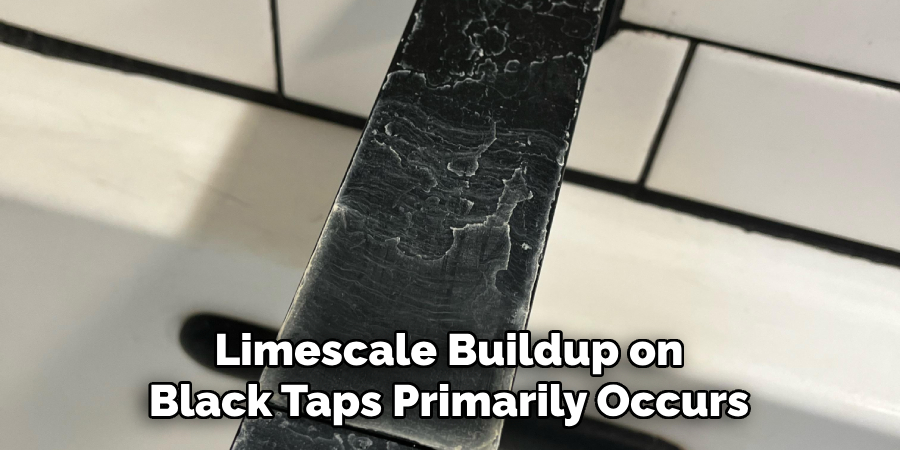
Factors contributing to the severity of limescale deposits include water temperature, frequency of tap use, and the tap’s material and finish. Warmer water accelerates the deposition of minerals, making hot water taps more susceptible to limescale buildup. Additionally, taps that are frequently used can develop limescale more quickly due to the constant evaporation of water on their surfaces. The unique finish of black taps, while visually appealing, can make limescale deposits more noticeable and challenging to remove without damaging the surface.
In regions where water has exceptionally high mineral content, homeowners might observe faster accumulation of limescale, necessitating more diligent maintenance and cleaning routines to prevent long-term damage and preserve the tap’s aesthetic quality.
Tools and Materials Required
Before launching into the task of removing limescale from your black taps, it is essential to gather the right tools and materials to ensure a successful and safe cleaning process. These include:
- White Vinegar or Lemon Juice: Natural acidic solutions such as white vinegar or lemon juice are highly effective in breaking down limescale without damaging the tap’s finish.
- Water: Needed to dilute the vinegar or lemon juice and to rinse off the cleaning solution.
- Soft Cloth: A soft, non-abrasive cloth is crucial for applying the cleaning solution and for polishing the taps gently, avoiding scratches.
- Old Toothbrush: A soft-bristled toothbrush is ideal for tackling hard-to-reach spots around the tap where limescale often accumulates.
- Rubber Gloves: To protect your skin from the acidity of the cleaning solution.
- Safety Glasses (Optional): To protect your eyes from splashes, especially when dealing with more persistent limescale deposits that require a bit more effort to remove.
- Bucket or Bowl: For mixing the cleaning solution.
- Spray Bottle (Optional): An empty spray bottle can be used to apply the diluted vinegar or lemon juice solution evenly and directly onto the limescale deposits.
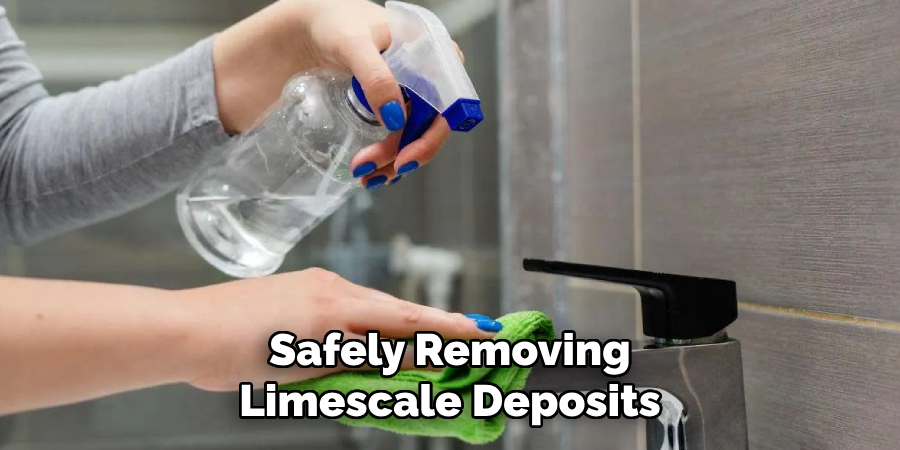
These simple yet effective tools and materials will assist you in safely removing limescale deposits from black taps, preserving their sleek appearance and ensuring their longevity. Remember to always perform a spot test on a small, inconspicuous area of the tap to ensure that the cleaning solution will not damage the finish.
Understanding Limescale Formation
To effectively combat limescale, it’s crucial to grasp the process behind its formation. The creation of limescale is a natural outcome of water’s ability to dissolve minerals. As previously mentioned, hard water, enriched with minerals like calcium and magnesium bicarbonate, plays a central role.
The transformation begins when this mineral-rich water is exposed to changes in temperature or when it evaporates. During evaporation or heating, the dissolved minerals re-crystallize and form solid deposits – this is limescale. Kitchens and bathrooms are prime spots for limescale accumulation due to the frequent use of hot water and the evaporation it undergoes.
Understanding this cycle of dissolution and re-crystallization is key to preventing and removing limescale. It highlights why certain areas are more prone to its buildup and suggests why certain preventive measures, such as water softening or regular tap maintenance, can be effective in mitigating limescale formation. It’s a cycle that, while natural and often inevitable, can be managed with informed care and the right techniques.
Essential Tools for Limescale Removal
When it comes to limescale removal, especially from sophisticated finishes like those found on black taps, using the correct tools and materials is non-negotiable for achieving effective results without inflicting damage. The tools listed below are not only essential for the task but also ensure the safety and longevity of your taps:
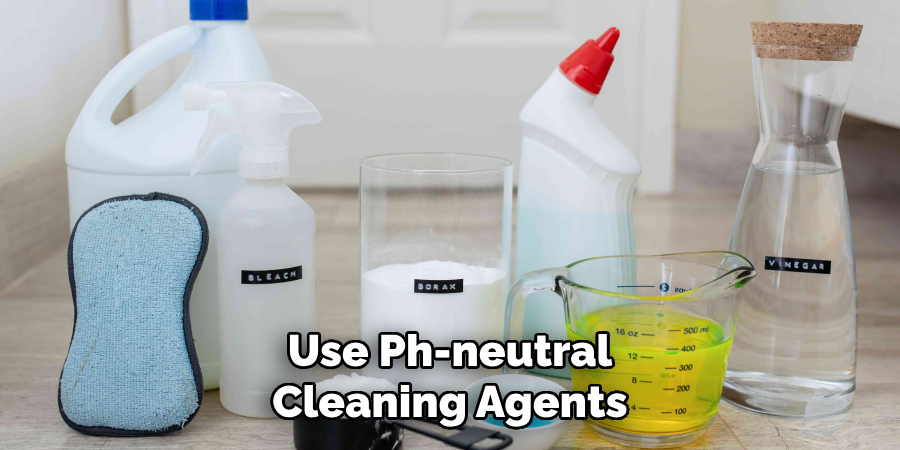
- Soft Microfiber Cloth: To prevent scratches on the black finish of your taps, it’s critical to use a soft, microfiber cloth. This type of cloth is gentle enough for delicate surfaces but effective enough to polish and remove limescale residues.
- Plastic Scraping Tool: For tougher limescale deposits that can’t be dissolved easily, a plastic scraper can be used cautiously to chip away at the buildup. It is less likely to cause damage compared to metal alternatives.
- Protective Gear: Safety should never be overlooked. Wearing rubber gloves protects your hands from both the limescale and the cleaning agents. Safety glasses are recommended to guard your eyes against any accidental splashes of the dissolving agents.
- pH-Neutral Cleaning Agents: For maintaining the integrity of the tap’s finish while cleaning, it’s advisable to use pH-neutral cleaning agents. These are effective on limescale but gentle on the tap’s surface.
- Non-Abrasive Sponges: A non-abrasive sponge is useful for applying the cleaning solution to larger areas and can help in gently scrubbing away the softened limescale deposits without scratching the surface.
- Bottle Brush or Pipe Cleaner: For cleaning the aerator or areas around the base of the tap where limescale builds up in hard-to-reach places, a bottle brush or pipe cleaner can be very handy. These tools help in reaching tight spaces without causing damage to the tap’s interior mechanisms.
By assembling these essential tools before beginning the cleaning process, you can approach limescale removal with confidence, knowing that you have everything needed to restore your black taps to their original, gleaming condition.
10 Methods How to Remove Limescale on Black Taps
1. Vinegar Soak:
Vinegar is a natural acid that can effectively dissolve limescale deposits. To remove limescale from black taps, fill a plastic bag with vinegar and secure it over the tap using a rubber band or string. Ensure that the affected areas are fully submerged in vinegar and leave the tap to soak for several hours or overnight. After soaking, remove the bag and rinse the tap thoroughly with water to remove any remaining vinegar residue.
2. Vinegar Spray and Scrub:
Alternatively, you can create a vinegar solution by mixing equal parts vinegar and water in a spray bottle. Spray the solution directly onto the limescale deposits on the black taps and let it sit for a few minutes to penetrate the buildup. Then, use a soft-bristled brush or sponge to scrub the affected areas gently. Rinse the taps with water to remove any loosened limescale and vinegar residue.
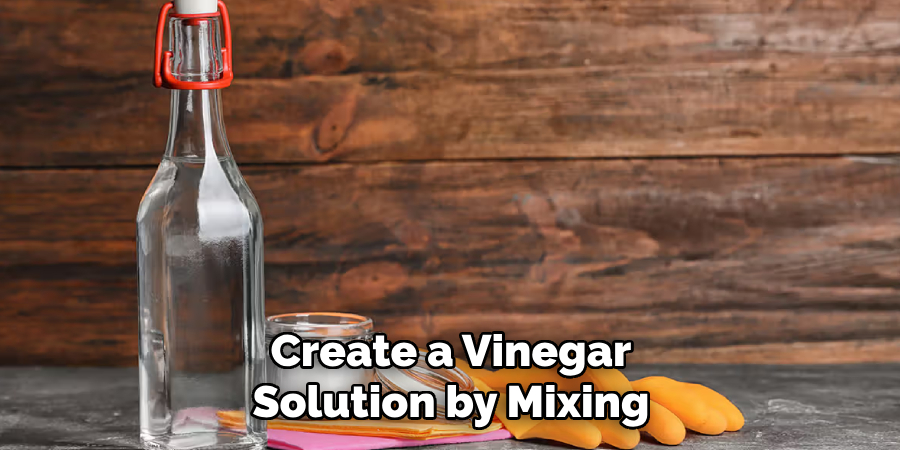
3. Baking Soda Paste:
Baking soda is an effective abrasive cleaner that can help scrub away stubborn limescale deposits from black taps. To create a baking soda paste, mix baking soda with a small amount of water until it forms a thick, spreadable consistency. Apply the paste to the limescale deposits on the taps and let it sit for 15-30 minutes. Then, use a soft-bristled brush or sponge to scrub the taps gently. Rinse thoroughly with water to remove the baking soda residue.
4. Lemon Juice Treatment:
Lemon juice contains citric acid, which can effectively dissolve limescale deposits and leave black taps sparkling clean. Squeeze fresh lemon juice onto the limescale-affected areas of the taps and let it sit for 15-30 minutes. Use a soft cloth or sponge to scrub the taps gently, focusing on areas with heavy limescale buildup. Rinse the taps thoroughly with water to remove any lemon juice residue.
5. Commercial Limescale Remover:
There are many commercial limescale removers available on the market that are specifically formulated to dissolve mineral deposits from taps and other surfaces. Choose a limescale remover that is safe for use on black finishes and follow the manufacturer’s instructions carefully. Apply the limescale remover to the affected areas of the taps and let it sit for the recommended amount of time before rinsing thoroughly with water.
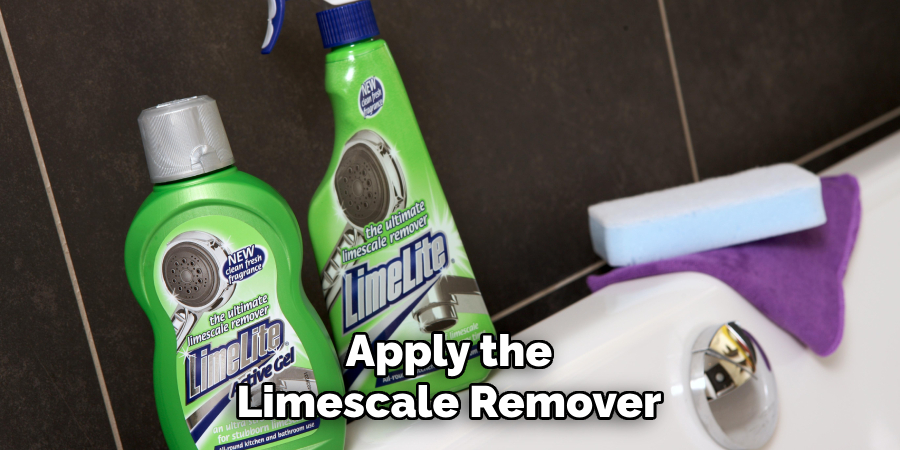
6. White Vinegar and Dish Soap Solution:
Combine white vinegar with a few drops of dish soap in a bowl to create a powerful limescale-fighting solution. Dip a soft cloth or sponge into the solution and use it to wipe down the black taps, paying special attention to areas with heavy limescale buildup. Allow the solution to sit on the taps for a few minutes before rinsing thoroughly with water to remove any residue.
7. Rubbing Alcohol and Salt Scrub:
Mix rubbing alcohol with coarse salt to create an abrasive scrubbing paste that can help remove limescale deposits from black taps. Apply the paste to the affected areas of the taps and use a soft-bristled brush or sponge to scrub gently. Rinse the taps with water to remove any loosened limescale and residue, then dry them thoroughly with a clean cloth.
8. Steam Cleaning:
Steam cleaning is an effective method for removing limescale deposits from black taps without the need for harsh chemicals. Use a handheld steam cleaner with a narrow nozzle attachment to direct steam onto the limescale-affected areas of the taps. The heat and pressure of the steam will help dissolve and loosen the limescale buildup, making it easy to wipe away with a soft cloth or sponge.

9. CLR Solution:
CLR (Calcium, Lime, and Rust) is a popular household cleaner that is effective at removing tough limescale deposits from taps and other surfaces. Dilute CLR according to the manufacturer’s instructions and apply it to the limescale-affected areas of the black taps. Allow the CLR solution to sit for the recommended amount of time before rinsing thoroughly with water to remove any residue.
10. Preventative Maintenance:
Once you have successfully removed limescale deposits from black taps, it’s essential to implement preventative measures to prevent future buildup. Wipe down the taps regularly with a soft cloth or sponge after each use to remove water droplets and prevent mineral deposits from forming. Additionally, consider installing a water softener or filtration system to reduce the mineral content in your water supply and minimize limescale buildup on taps and other fixtures.
Troubleshooting and Tips
While the methods listed above are effective in removing limescale from black taps, you may encounter some common issues during the cleaning process. Here are some troubleshooting tips to help you address these challenges:
- Streaks or Dullness on Black Taps: If you notice streaks or a dull finish on your black taps after cleaning, it may be due to the cleaning solution not being thoroughly rinsed off. To rectify this, rinse the taps again with plenty of water and dry with a soft, lint-free cloth. For an added shine, you can buff the taps with a microfiber cloth.
- Stubborn Limescale Deposits: For particularly stubborn limescale deposits that don’t respond to vinegar or lemon juice treatments, consider repeating the process multiple times. Alternatively, a commercial limescale remover designed for tougher jobs may be required. Be sure to follow the instructions carefully and test the product on a small, inconspicuous area first to ensure it does not damage the tap’s finish.
- Preventing Scratches: Always use soft cloths, sponges, or brushes to avoid scratching the finish of your black taps. Never resort to abrasive cleansers or pads, as these can cause irreversible damage to the tap’s surface.
- Natural Solutions Versus Commercial Cleaners: While natural solutions are preferred for their eco-friendliness and safety, commercial cleaners offer a stronger alternative for severe limescale buildup. Whichever option you choose, ensure it is suitable for use on black surfaces to prevent discoloration.
- Safety Precautions: When using commercial limescale removers or other chemical solutions, always wear gloves and ensure the room is well-ventilated to protect yourself from harmful fumes.
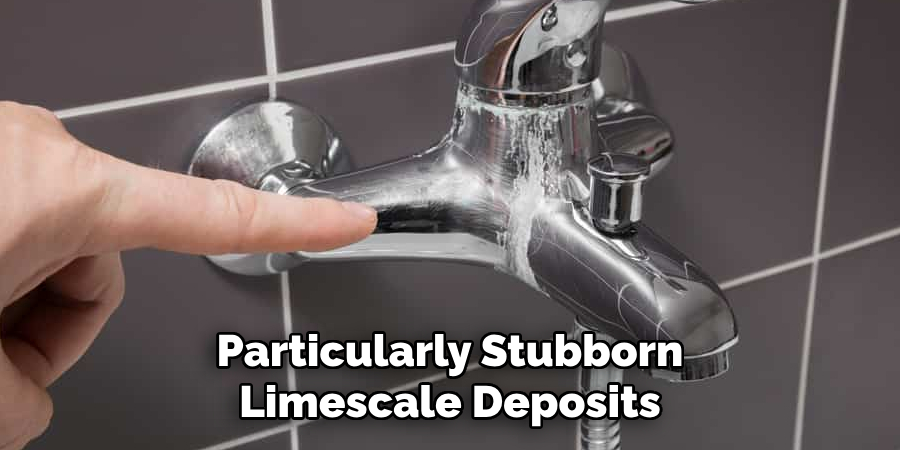
By following these troubleshooting tips and conducting regular maintenance, you can keep your black taps free from limescale buildup and maintain their aesthetic appeal for years to come.
Conclusion
In conclusion, effectively removing limescale buildup on black taps is essential for maintaining their aesthetic appeal and functionality. This comprehensive guide provides individuals with a variety of methods and techniques to tackle limescale deposits effectively.
By following the step-by-step instructions outlined in this guide and utilizing the recommended tools and cleaning agents, individuals can restore the beauty of their black taps and ensure optimal performance. Additionally, implementing preventive measures and regular maintenance practices can help minimize future limescale buildup, prolonging the lifespan of the taps. Thanks for reading, and we hope this has given you some inspiration on how to remove limescale on black taps!